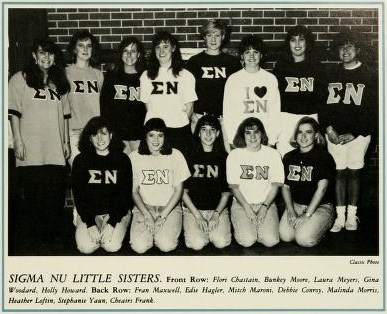History of Greek Life at PC
November 7, 2013
Have you ever wondered how Greek organizations became vital on our campus today?
According to PC Alumnus Vernon James’s article on Greek Life at PC, Presbyterian College’s rich Greek history began in 1890 after the school name changed from Clinton College to Presbyterian College of South Carolina. Before fraternities were introduced on campus, male organizations such as Eukosmain Literary Society and the YMCA became popular outlets for student involvement.
The first Greek fraternity introduced to campus was Pi Kappa Alpha, Mu Chapter on December 9, 1890. Before joining a member of Greek life, students had to be in good academic standing and members of a literary society. At the time, women were represented through the Astrathean and Young Ladies Mutual Improvement Society. Both female literary societies were short-lived due to the small population of females on campus. The second fraternity to join Presbyterian College’s campus was Phi Phi Phi, known as Tri-Phi, in 1896. Though little information is known about the Tri-Phi’s at PC, the fraternity did not return with a charter after the abolishment of fraternities on campus in 1909.
Shortly after in March of 1907, the third Greek fraternity, Pi Kappa Phi, Beta Chapter, joined the existing two brotherhoods at PC. The brothers of Pi Kappa Alpha, known as Pikes, struggled to recruit men due to PC’s low enrollment. After the ban on fraternities, Pike returned on November 21, 1921, but the brothers continue to celebrate their founding at PC on their first initial date. During the ban of fraternities, Pi Kappa Phi held their charter until 1912 and then went underground as The Smokers club until their return to campus in February of 1921.
It was a celebratory September 3, 1920 day when faculty approved the return of fraternities on campus. President Davison McDowell enforced rules and regulations regarding hazing, requiring students to sign a pledge that they would abstain from hazing activities for the 1921-22 school year.
Though not much has changed according to PC’s rules and regulations among fraternity guidelines, the number of fraternities has doubled. The fraternities include: Alpha Sigma Phi, Kappa Alpha, Pi Kappa Alpha, Pi Kappa Phi, Sigma Nu, and Theta Chi. Each fraternity contributes through leadership, service, brotherhood, and academics across Presbyterian College’s campus.
Now you are probably wondering, when did sororities become a part of campus? Actually, sororities did not even exist until one hundred years after the first three fraternities were founded.
Presbyterian College initially did not want sororities to be on campus, so they decided to form the Women’s Social Hall as an alternative. The group was founded in 1983 and was open to any woman on campus who wanted to join. The first year Presbyterian College had 111 women join the organization. The WSH had a building behind Jacob’s Hall named the Green House, where members were able to socialize and study. In addition, they had functions, mixers, and a Big/Little program for their members. The Women’s Social Hall even had their very own philanthropy. They decided to raise money for the American Cancer Society because their secretary’s mother had terminal cancer.
It was not until 1990 that Presbyterian College decided to add three sororities: Alpha Delta Pi, Sigma Sigma Sigma, and Zeta Tau Alpha. At this time, the Women’s Social Hall was still an active group on campus, and the school decided to add sororities as well. Chapters from other schools, such as the University of South Carolina, Clemson, and Winthrop, were able to come help recruit members and train the officers.
The first year, these sororities had a formal rush process in January where they were able to obtain members. During rush, these sororities had an open house night, a skit night, and a preference night. Alpha Delta Pi, Eta Xi Chapter, was officially installed on campus January 9, 1990 and received 62 members. Next was Sigma Sigma Sigma, Epsilon Pi Chapter, which was installed exactly a month after Alpha Delta Pi on February 9, 1990 and had 56 members. Last was Zeta Tau Alpha, Kappa Beta Chapter, which was installed on campus February 16, 1990, when they had 64 members join.
Similar to the Women’s Social Hall, all the sororities had functions, mixers with fraternities, and many philanthropy events. By 1992, 41% of all women on campus were Greek affiliated. In 1994, the Women’s Social Hall became nonexistent as more and more women wanted to become a part of a national sorority. The WSH on PC’s campus was able to stay an active group for 11 years and keep up the competition with sororities for 4 years.
Today, approximately 45% of our student body is Greek. There are six national fraternities and three national sororities on campus. Their commitment to scholarship, service, and philanthropy contribute to Presbyterian College’s motto “While We Live, We Serve.”







